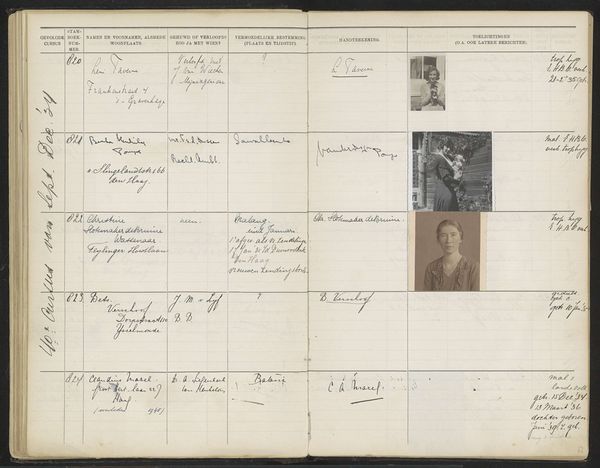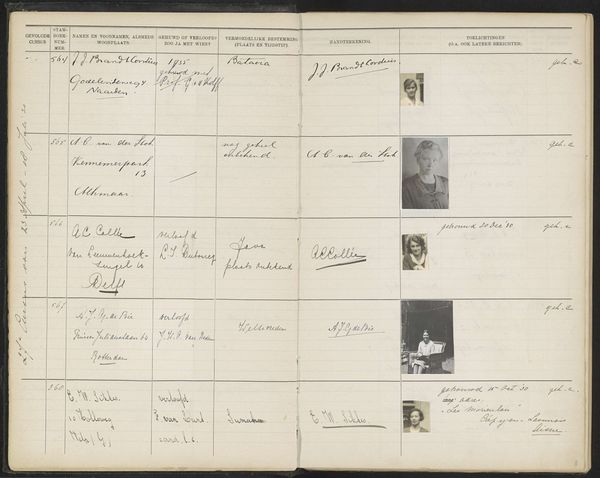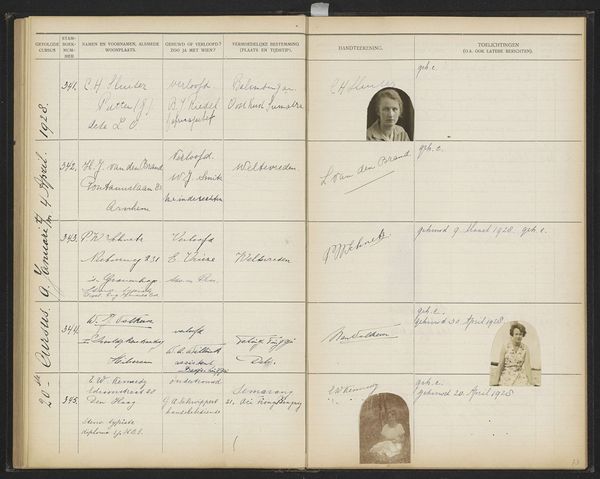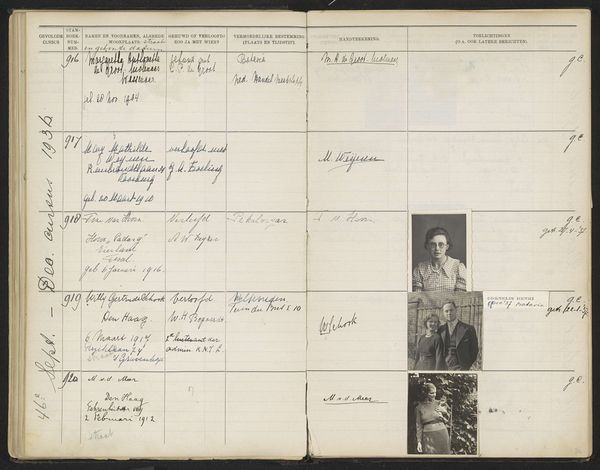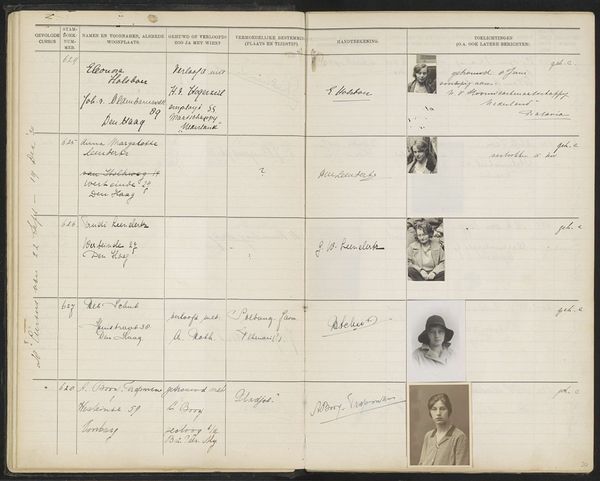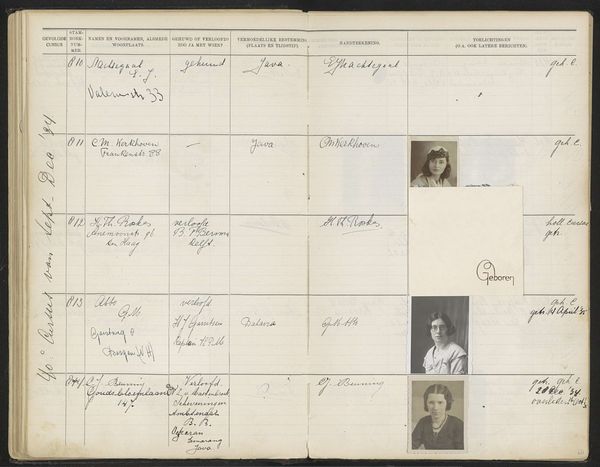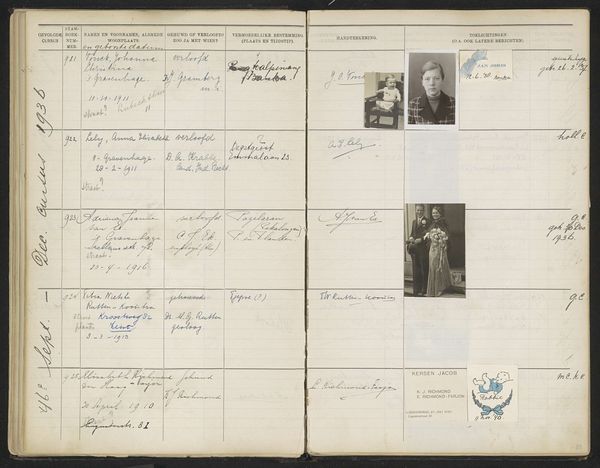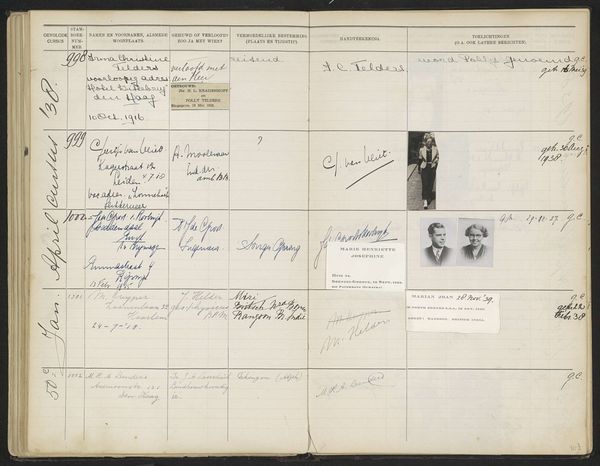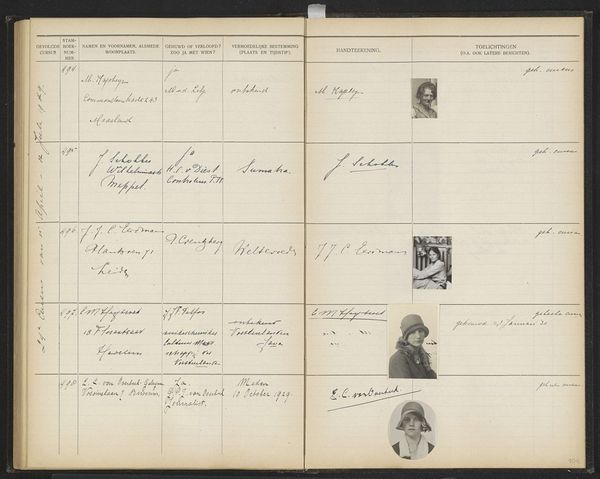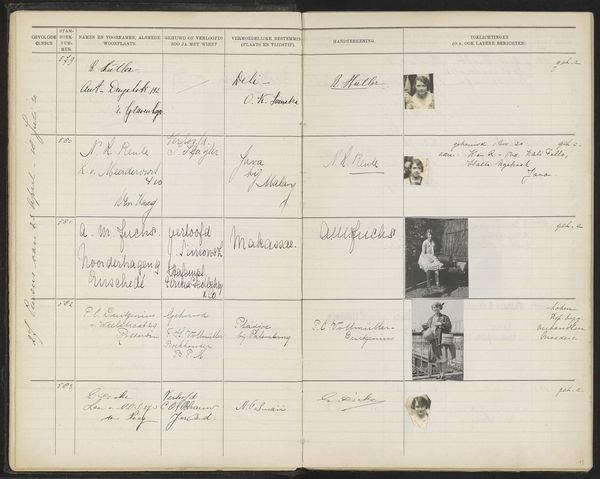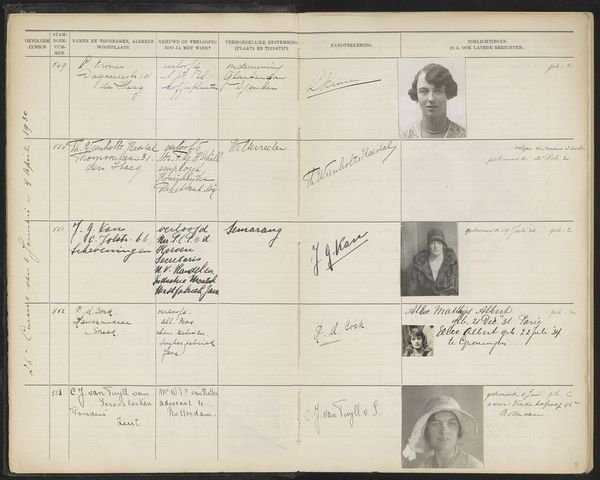
Blad 47 uit Stamboek van de leerlingen der Koloniale School voor Meisjes en Vrouwen te 's-Gravenhage deel II (1930-1949) Possibly 1933 - 1934
0:00
0:00
print, paper, photography
#
portrait
#
ink paper printed
# print
#
paper
#
photography
Dimensions: height 337 mm, width 435 mm
Copyright: Rijks Museum: Open Domain
Curator: We’re looking at a page, possibly from 1933 or 1934, titled "Blad 47 uit Stamboek van de leerlingen der Koloniale School voor Meisjes en Vrouwen te 's-Gravenhage deel II (1930-1949)." The title indicates it's a leaf from a register or yearbook of a Colonial School for Girls and Women in The Hague. Editor: My immediate reaction is how strikingly arranged it all seems, like a visual taxonomy of these women, captured across various images of them – photographic portraits and illustrated caricatures, combined within the strict layout. There are handwritten signatures – it’s intriguing. Curator: Indeed. Each entry details a student – Johanna Hemana, Hiele de Heems, Minde van Room. And under "Remarks," further data points are listed such as a betrothal and marriages, along with related dates, like dates in April. It almost suggests how life's benchmarks of domesticity were viewed within the purview of their education, with life-cycle stages linked within the colonial framework of that time. Editor: I see, and given the presence of the hand-drawn illustrations– such as the whimsical red sketch of a stork – placed right alongside photographs, an interesting juxtaposition emerges. The page documents students but also reflects evolving modes of representation itself. Curator: Precisely. These women weren't simply colonial subjects. The photographs, and especially the individual signatures, reveal an assertion of identity – documenting both community membership and individual selves. The semiotics hint at agency and compliance intertwined in an intriguing tension. Editor: The page feels simultaneously rigid and intimate. Rigid in the uniform structure, yet intimate via the photographs and flourishes that personalize each student. Even now, it triggers emotional recognition through their portraits. The power of document, portraiture, and personal symbol, bound as one. Curator: And within this tension, it presents how women were positioned in that era—at the nexus of school instruction, domestic life, the colonial structure, personal ambition, and artistic flourish. This ordinary notebook page tells a richly multilayered story. Editor: A dense encoding for what otherwise appears simply an old binder's spread.
Comments
No comments
Be the first to comment and join the conversation on the ultimate creative platform.
